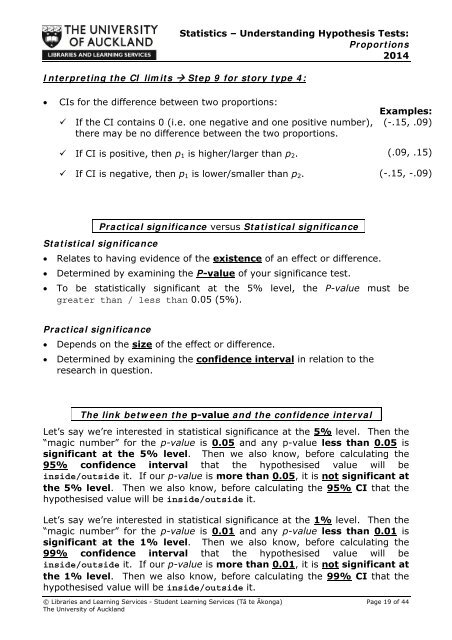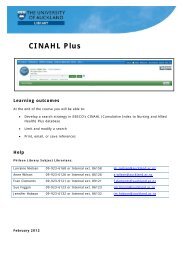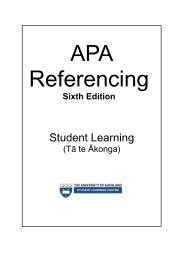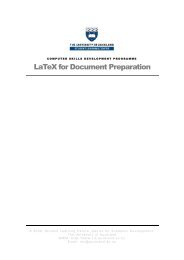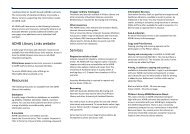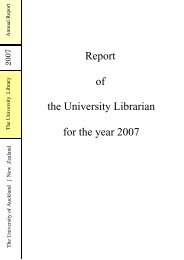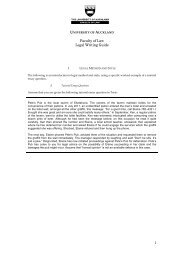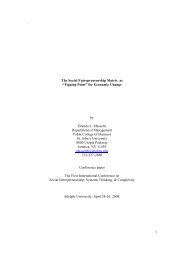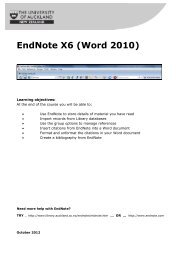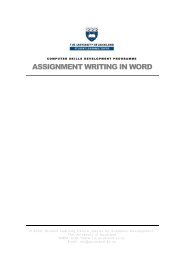STATISTICS â UNDERSTANDING HYPOTHESIS TESTS
STATISTICS â UNDERSTANDING HYPOTHESIS TESTS
STATISTICS â UNDERSTANDING HYPOTHESIS TESTS
Create successful ePaper yourself
Turn your PDF publications into a flip-book with our unique Google optimized e-Paper software.
Statistics – Understanding Hypothesis Tests:Proportions2014Interpreting the CI limits Step 9 for story type 4:CIs for the difference between two proportions: If the CI contains 0 (i.e. one negative and one positive number),there may be no difference between the two proportions. If CI is positive, then p 1 is higher/larger than p 2 . If CI is negative, then p 1 is lower/smaller than p 2 .Examples:(-.15, .09)(.09, .15)(-.15, -.09)Practical significance versus Statistical significanceStatistical significance Relates to having evidence of the existence of an effect or difference. Determined by examining the P-value of your significance test.To be statistically significant at the 5% level, the P-value must begreater than / less than 0.05 (5%).Practical significance Depends on the size of the effect or difference. Determined by examining the confidence interval in relation to theresearch in question.The link between the p-value and the confidence intervalLet’s say we’re interested in statistical significance at the 5% level. Then the“magic number” for the p-value is 0.05 and any p-value less than 0.05 issignificant at the 5% level. Then we also know, before calculating the95% confidence interval that the hypothesised value will beinside/outside it. If our p-value is more than 0.05, it is not significant atthe 5% level. Then we also know, before calculating the 95% CI that thehypothesised value will be inside/outside it.Let’s say we’re interested in statistical significance at the 1% level. Then the“magic number” for the p-value is 0.01 and any p-value less than 0.01 issignificant at the 1% level. Then we also know, before calculating the99% confidence interval that the hypothesised value will beinside/outside it. If our p-value is more than 0.01, it is not significant atthe 1% level. Then we also know, before calculating the 99% CI that thehypothesised value will be inside/outside it.© Libraries and Learning Services - Student Learning Services (Tā te Ākonga) Page 19 of 44The University of Auckland


